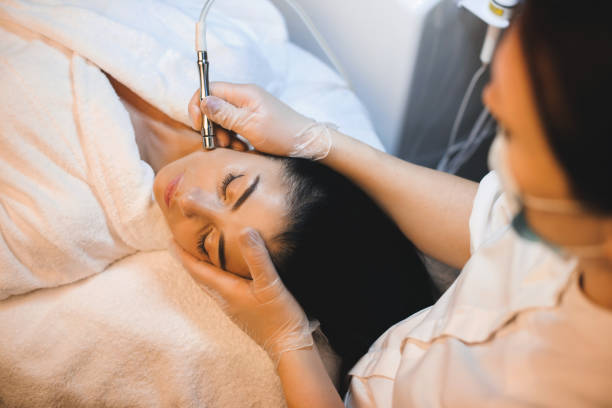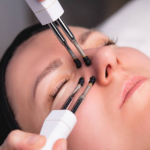Microdermabrasion is a sought-after skincare treatment that promises to rejuvenate the skin by reducing signs of aging and improving overall skin texture. But how many sessions does it take to see tangible results? Generally, clients begin to observe noticeable improvements after an average of four to six treatments, spaced about two to four weeks apart. This varies from person to person, depending on individual skin issues and treatment intensity. In this article, we’ll explore the optimum number of microdermabrasion sessions needed, tips for enhancing results, and FAQs on this effective cosmetic procedure.
Understanding Microdermabrasion and Its Effects on the Skin

Microdermabrasion works by using fine crystals or a diamond tip to gently exfoliate the surface layer of the skin. By removing dead skin cells and promoting cell turnover, this technique addresses various skin imperfections. Regular treatments can result in smoother, brighter, and more even-toned skin. For anyone battling fine lines, light acne scars, or hyperpigmentation, microdermabrasion can be a game-changer. However, knowing your skin type and the conditions you want to treat is essential before embarking on this skincare journey.
Setting Realistic Expectations for Microdermabrasion Results

Individual skin conditions and goals largely dictate how many microdermabrasion treatments are necessary. While some individuals see immediate enhancements, others may need a series of sessions to achieve their desired outcomes. Factors such as the skin’s condition, age, lifestyle, and post-treatment care can all impact results. It’s essential to have a realistic perspective and to understand that a commitment to the process is typically required for lasting benefits.
Determining the Optimal Number of Microdermabrasion Treatments
The journey to revitalized skin starts with the initial set of treatments. During this phase, here’s what you can typically expect:
- Assessment: Your skin care professional will evaluate your skin and outline a treatment plan.
- Early Results: After the first few sessions, your skin may feel smoother and appear more radiant.
- Consistent Treatment: Adhering to the suggested frequency of treatments is key to obtaining the best possible results.
Once your skin has improved, ongoing maintenance treatments will help preserve your newfound glow. This phase involves less frequent sessions, tailored to your specific skincare needs to keep your skin looking its best.
Maximizing Microdermabrasion Results: Tips and Best Practices
To maximize the effectiveness of microdermabrasion treatments, here are some tips you should follow:
- Maintain a consistent skincare routine, including the use of sunscreen to protect the new delicate skin.
- Stay hydrated and follow a balanced diet to support skin health from within.
- Avoid sun exposure and harsh chemicals on the skin immediately after treatments.
- Consult with your skincare specialist for personalized post-treatment care instructions.
Common Misconceptions about Microdermabrasion Treatments
Microdermabrasion is a popular skin rejuvenation procedure, but there are several misconceptions that may lead to confusion about its benefits and risks. Understanding these can help individuals make informed decisions about undergoing this treatment:
| Misconception | Reality |
|---|---|
| Microdermabrasion is painful. | Microdermabrasion is generally not painful. Most people experience mild discomfort at most, often described as a slight tugging sensation on the skin. |
| It’s only for anti-aging. | While effective for reducing the appearance of wrinkles, microdermabrasion also treats acne, hyperpigmentation, and scarring, making it suitable for various skin concerns. |
| Results are immediate and permanent. | Some results, like brighter skin, can be seen immediately, but most conditions, such as deep wrinkles or significant sun damage, require multiple treatments for more dramatic improvements. Results are not permanent; maintenance treatments are necessary. |
| Microdermabrasion is suitable for all skin types. | While it’s beneficial for many, it may not be suitable for very sensitive skin, those with active acne, or certain skin conditions. A consultation with a dermatologist is recommended to determine if it’s right for you. |
Conclusion
In conclusion, microdermabrasion is a versatile treatment that can yield satisfying results for many skin types when administered properly and consistently. The number of treatments needed to see visible results varies, but starting with a series of four to six treatments is a common recommendation. By tailoring treatments to individual needs and following proper skincare regimes, individuals can achieve healthier and more youthful-looking skin.
FAQs
| FAQ | Answer |
|---|---|
| How soon can I expect to see results from microdermabrasion treatments? | Typically, after several treatments spaced out every 2-4 weeks, visible improvements can be observed as the skin rejuvenates between sessions. |
| Can microdermabrasion provide benefits after just one session? | Yes, one treatment can provide a brighter complexion, but lasting results generally require a series of treatments. |
| How often should I have microdermabrasion treatments to maintain results? | After the initial phase, professionals suggest a maintenance treatment every 2-3 months for ongoing results. |
| Is microdermabrasion suitable for all skin types? | While it’s beneficial for many, individuals with very sensitive skin or specific skin conditions should first consult with a dermatologist. |
| Do home microdermabrasion kits work as well as professional treatments? | Professional treatments are generally strong and can provide more significant results, whereas home kits may be better suited for maintenance if used correctly. |


